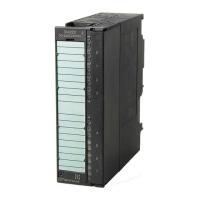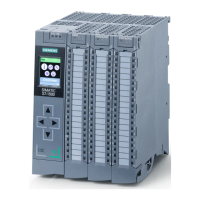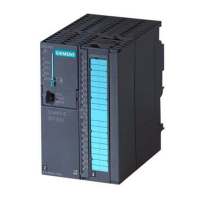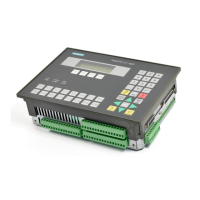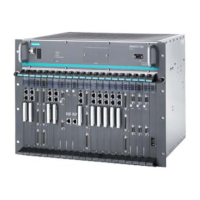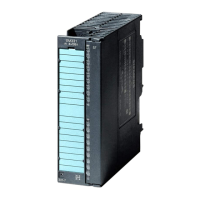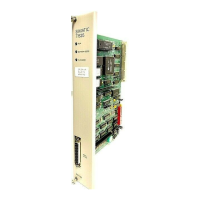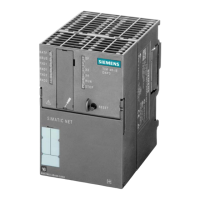Installation of a CPU 41x-H
4-3
Automation System S7-400H Fault-tolerant Systems
A5E00068197-07
Table 4-1 LEDs of the CPUs
LED Color Meaning
INTF red Internal fault
EXTF red External fault
FRCE yellow Active force request
RUN green RUN mode
STOP yellow STOP mode
BUS1F red Bus fault at MPI/PROFIBUS DP interface 1
BUS2F red Bus fault at PROFIBUS DP interface 2
MSTR yellow CPU leads the process
REDF red Loss of redundancy/redundancy error
RACK0 yellow CPU in rack 0
RACK1 yellow CPU in rack 1
IFM1F
red Error at interface submodule 1
IFM2F
red Error at interface submodule 2
Operating Mode Selector
You can use the mode selector to select the current operating mode of the CPU.
The mode selector is a key switch with four switching positions. You can use
different protection levels and limit any program changes or startup options (STOP
to RUN transition) to a certain group of people.
Section 4.4 describes the functions of the mode selector and the protection levels
of the CPUs.
Slot for Memory Cards
You can insert a memory card in this slot.
There are two types of memory card:
• RAM cards
You can expand the load memory of a CPU with the RAM card.
• FLASH cards
You can use the FLASH card to store your user program and your data so that
they are failproof (even without a backup battery). You can either program the
FLASH card on the programming device or in the CPU. The FLASH card also
expands the load memory of the CPU.
A detailed description of memory cards is available in Chapter 4.5.1.
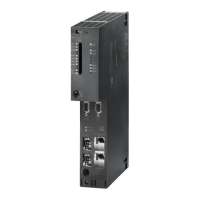
